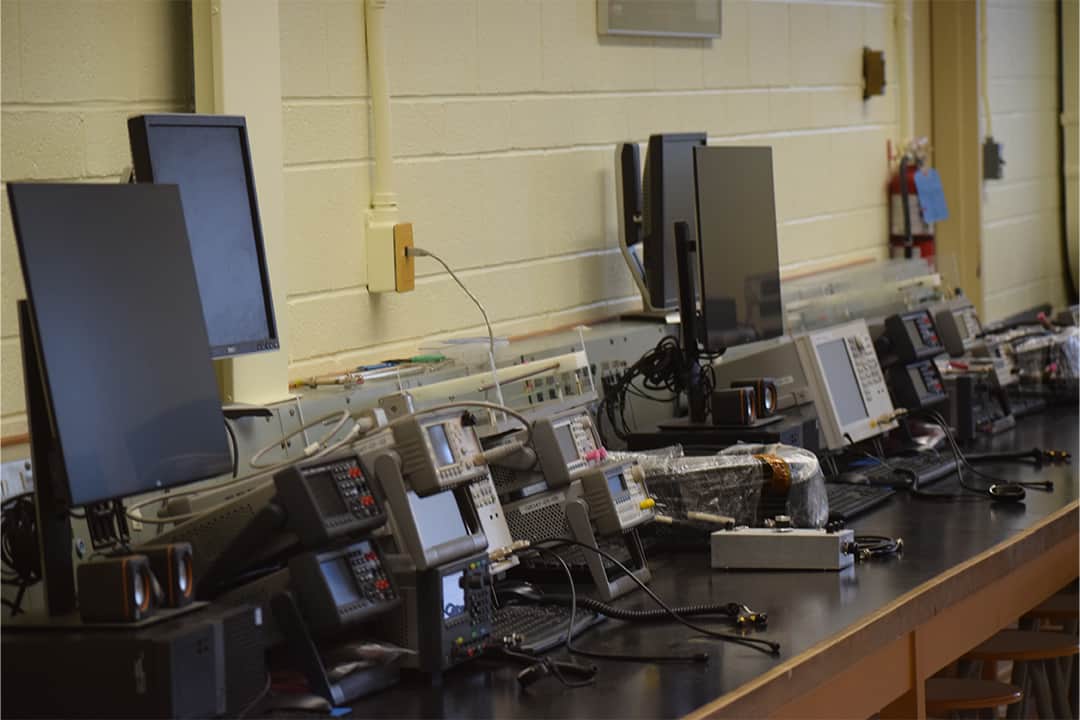As students, we often hear about the negative side of artificial intelligence (AI) in academia: that it’s a tool discouraging actual learning and encouraging plagiarism, cheating, and unoriginality in work.
But this isn’t the whole story. Research by the University of Toronto Acceleration Consortium, in fact, proves it’s not; on the contrary, it found that AI can enhance scientific research — namely, by AI-powered labs.
The Acceleration Consortium’s mission is to show how AI can accelerate the generation of sustainable materials in demand on a global scale. Climate change, disease spread, and waste management are international issues beckoning for cheaper, more sustainable materials that just aren’t made fast enough locally.
Using self-driving autonomous labs, the Acceleration Consortium is making larger strides toward integrating the subdisciplines of materials science, AI, robotics, and computer modelling to test new materials in a time-efficient, cost-friendly way.
What exactly is a self-driving lab?
Self-driving labs (SDLs) — and, specifically, materials acceleration platforms — are autonomous labs that are programmed by researchers to predict the feasibility of a material for an objective by evaluating its molecular composition.
Using robotics and engineering, materials undergo several trial experiments in which they are assessed by the SDL’s AI in terms of their usefulness to a particular predefined application — for example, optimizing chemical methods for creating a specific pharmaceutical drug. The SDL’s system continuously feeds new data back into itself to store evidence on prior experiments, derive new hypotheses, and alter trials to reflect previous results more accurately.
These robotically powered labs are programmed to store a slew of algorithms applying to a large range of disciplines, such as biochemistry, physics, and engineering, which are later tapped into when testing material candidates. With robot brains at the heart of material science labs, researchers can now be exempted from performing tedious and repetitive steps in experiments such as syntheses, purifications, and reagent preparations.
“We’ve essentially supercharged the process of scientific discovery,” said Alán Aspuru-Guzik, the director of the Acceleration Consortium and a professor in the departments of chemistry and computer science at UTSG, to U of T News.
U of T received a $200-million grant from the Canadian First Research Excellence Fund in support of Aspuru-Guzik’s research on SDLs. With the help of this grant, the Acceleration Consortium hopes to bridge the gaps between government, industry, and academia worldwide and be inclusive of environmental impacts and Indigenous perspectives when implementing research designs.
“No one person has all the skills to address the sustainability of new substances,” said Michelle Murphy, in a U of T News article in response to the research grant. Murphy is a professor of history and women and gender studies at UTSG and the Canada research chair in science and technology studies and environmental data justice. “We truly need much greater collaboration and a willingness to really think across difference[s].”
With materials for healthcare, renewable energy sources, and biodegradable fuels in demand across the world, Acceleration Consortium’s mission is to tackle “[these] global issues [with] global approaches,” convening experts from around the world.
What does the future look like with AI-powered labs?
Self-driving labs augment the manufacturing process to produce sustainable materials, such as drugs for eco-friendly cement, greener electronics, regenerative medicine — which develops methods to regenerate lost cells, tissues, and even limbs — and much more.
Some products that used to take months or years at a time to develop can now be produced within weeks with AI. SDLs have already formulated several algorithms to design a drug that could potentially treat a common type of liver cancer in 30 days and to design organic lasers within two days.
Self-driving labs show that AI doesn’t deserve its bad reputation in academia. On the flip side, they present autonomous technology as a solution to the materials race worldwide.



No comments to display.